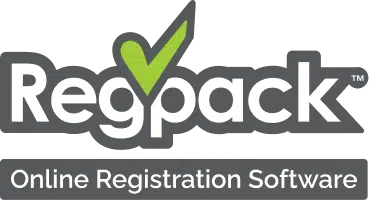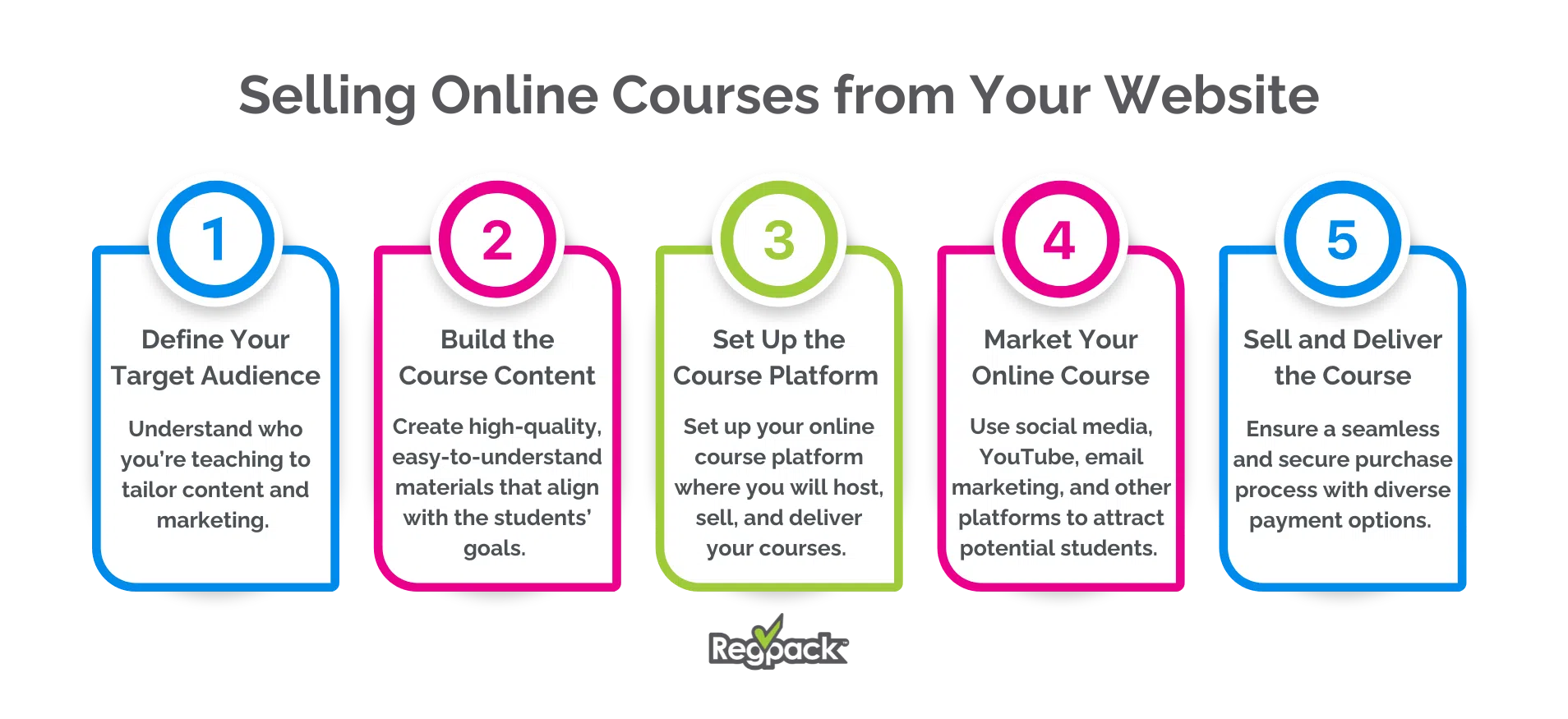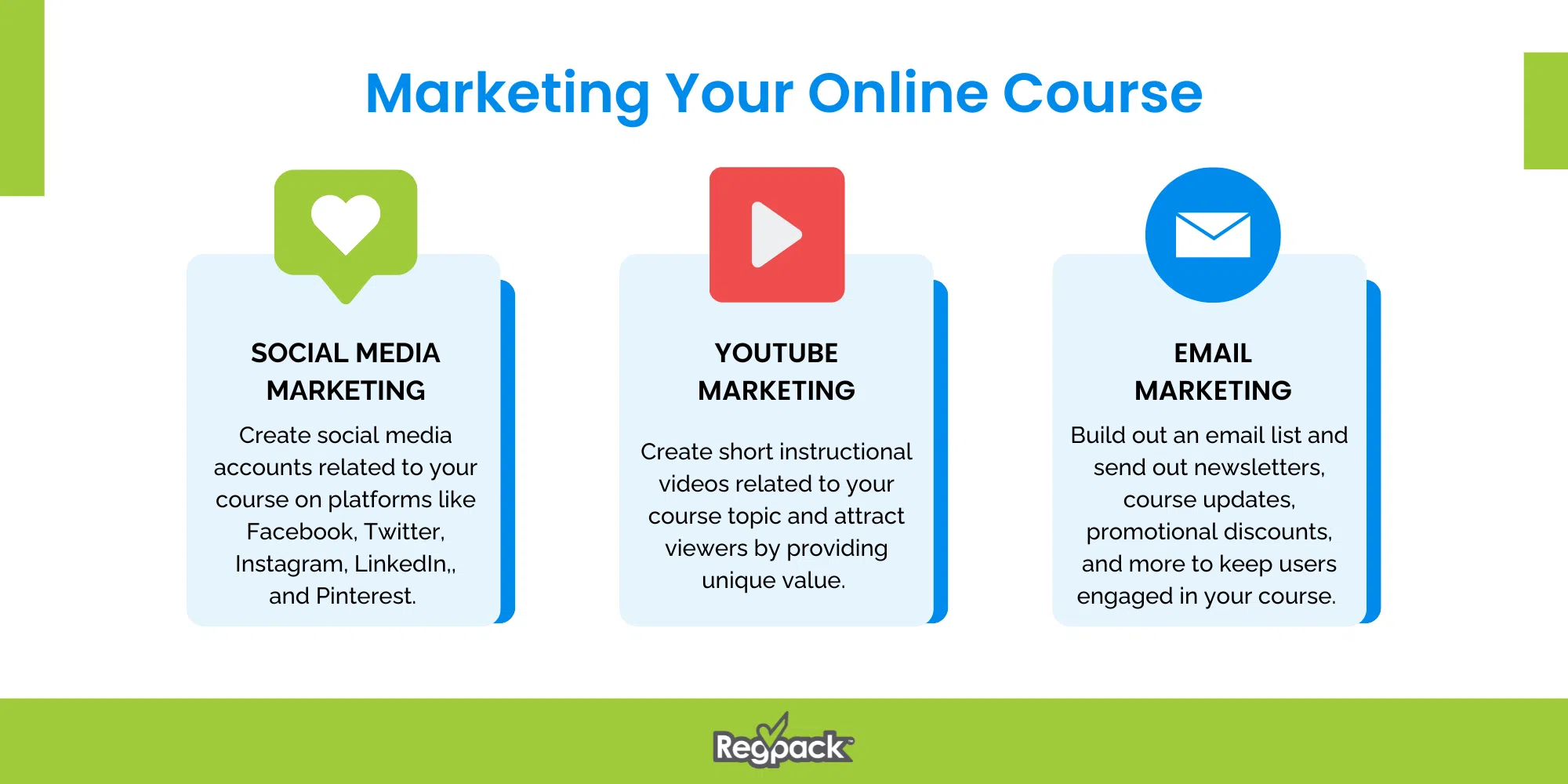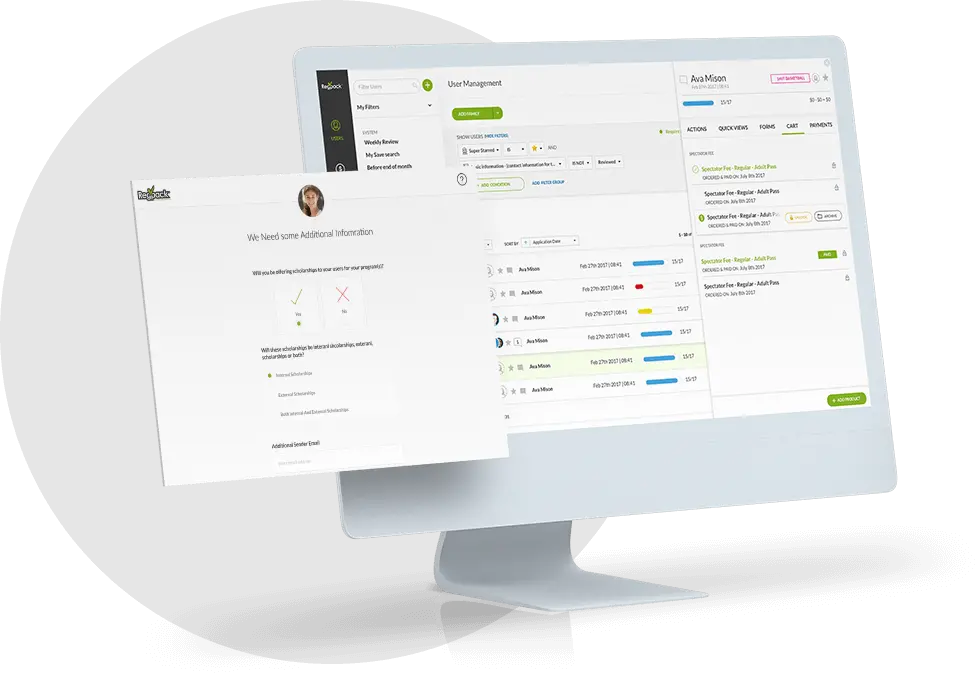How do you sell online courses from your own website? The short answer involves four key steps: creating compelling course content, setting up an online course platform on your website, applying effective marketing strategies, and making the course easily available for purchase and download.
Creating and selling online courses has recently become an increasingly popular way of generating extra income. For entrepreneurs and educators, the Internet has provided an accessible platform to reach potential customers and students from around the world. Having the tools to sell online courses from your own website not only provides you with complete control over your content but also allows you to build your own brand and online community and tailor your online course platform to the preferences of your target audience.
Over the course of this guide, we will go into identifying your target audience, creating valuable content, setting up your online course platform, marketing your courses, and finally selling your courses.
- Step 1: Defining Your Target Audience
- Step 2: Building the Course Content
- Step 3: Setting Up the Online Course Platform
- Step 4: Marketing Your Online Course
- Step 5: Selling and Delivery of the Course
- How Regpack Can Help You Sell Online Courses
Whether you’re a seasoned course creator or a first-time online course platform explorer, we will provide the information you need to create and sell profitable online courses.
Step 1: Defining Your Target Audience
Understanding who you’re teaching is just as important as understanding what you’re teaching. As a course creator, you must identify your target audience. By doing so, you’re able to tailor your course content, marketing efforts, and overall strategy to meet the needs and preferences of these potential students.
Online course marketplaces are saturated with courses covering a wide array of topics; standing out requires providing unique value to a specific group of people.
Start defining your target audience by identifying their primary characteristics and needs. Consider factors such as age, profession, geographic location, interests, problems they want to solve, and objectives they wish to achieve. For instance, if your course teaches graphic design, your target audience could be young professionals looking to gain new skills, small business owners in need of branding help, or novice designers seeking to professionalize their craft.
Your understanding of your target audience will not only guide your course creation process but also play a significant role in your future marketing and sales efforts.
Step 2: Building the Course Content
Once you’ve identified your target audience, it’s time to start building your course content. The course content should be an easy-to-understand, step-by-step guide to achieving the results your students want.
One of the most important things to consider in creating your course content is maintaining a high standard of quality. The overall value of your course will be determined by the richness of the content you provide.
Course content can come in various forms. While creating it, always remember to accommodate the varying subjects. You could use text for theory and concepts, images for examples, video lectures for comprehensive knowledge, and audio recordings for additional explanations. For example, a YouTube video can provide a visual demonstration of a complex topic, which would facilitate a better understanding of the subject.
The topic of your course will largely dictate the exact materials you’ll need, but you’ll generally want to have:
- An outline of the entire course
- Individual lesson plans
- Visual materials such as slide decks, graphics, diagrams, and videos
- Worksheets and course handouts
- Quizzes or self-assessment tools.
When coming up with your course topic, make sure it’s something that your target audience is interested in learning, that it aligns with your expertise, and that it’s a subject you’re passionate about. The more passionate you are, the easier it will be to create engaging content.
Step 3: Setting Up the Online Course Platform
With your target audience in mind and your course content underway, the next essential step involves setting up your online course platform. This is where you will host, sell, and deliver your online courses. Your online course platform is essentially like your own digital classroom.
Unlike online course marketplaces, selling from your own website gives you complete control over everything: pricing, course content, sales page, student data, payment gateway, and more. Additionally, with your own platform, you don’t have to worry about sharing your profits with a third party.
There are many tools available to create your online course website, but WordPress websites are a popular choice due to their easy-to-use interface and customizable features. WordPress plugins, like WooCommerce, can easily turn your website into an online course platform.
Key Website Features to Include
Below are must-haves for your online course website. These elements must be well-structured and appealing, capturing visitors’ attention and motivating them to join your online course.
- Sales Page: This page should be easily accessible, allowing potential students to learn more about the course and complete their purchase.
- Landing Page: Often the first page a visitor sees; it should be engaging and encourage sign-ups.
- Payment System: Integrating a reliable payment gateway such as PayPal, Stripe, Regpack, or direct bank transfer is crucial for facilitating online payments. This will allow potential students to quickly and conveniently purchase your course.
Setting up your online course platform involves careful preparation, but it’s a one-time effort that reaps a long-term return.
Step 4: Marketing Your Online Course
Once your online course platform is up and running, the next major step is to attract students. This is where marketing comes into play. Effective marketing means reaching your target audience and convincing them to purchase your course.
Social Media Marketing
You can create social media accounts related to your course on platforms like Facebook, Twitter, Instagram, LinkedIn, and Pinterest to reach your target audience. Posting useful content and engaging with your followers can drive potential students to your website. Remember to link your social media marketing efforts back to your blog posts and other key pages on your course website for maximum exposure.
YouTube Marketing
Creating a YouTube channel can also be an excellent way to drive traffic to your course. You can post short instructional videos related to your course topic, and attract viewers by providing unique value. Remember to include a link to your course’s sales page in the description of every video to drive interested viewers to your course.
Email Marketing
Email marketing involves building an email list and sending out newsletters, course updates, promotional discounts, and more. When a visitor lands on your course page, prompt them to subscribe to your email list. Send out regular emails to keep your subscribers engaged and interested in your course. By doing this, you will build a direct line of communication with potential students.
Remember that marketing is an ongoing process. Don’t stop once your course launches. Continue engaging with your audience, getting feedback, and adjusting your marketing efforts as needed. As your online community grows, so will your reputation and course sales.
Step 5: Selling and Delivery of the Course
The final step of this process is to sell your course and deliver the course content to your newly enrolled students. Here is where your business model and strategic planning come into play.
There are several ways to sell your online courses.
- One-off Course Sales: Students make a single payment for lifetime access to the course content.
- Monthly Subscription Model: Students pay a monthly fee for access to a library of courses.
- Tiered Pricing Model: Offer different levels of the course at different prices.
- Bundled Courses: Bundle multiple courses together for a discount.
Regardless of your chosen sales model, it’s essential to make the purchase process as easy as possible for your potential students. This is where your payment gateway integration comes into play. The process should be secure, and seamless, and provide a variety of payment options to cater to the diverse needs of your customers.
Remember that after-sales service is essential. Be accessible and open to feedback. Engage with your students regularly, help them overcome roadblocks, and continuously work towards improving their online learning experience. This will help build your reputation as a reliable online course creator.
How Regpack Can Help You Sell Online Courses
Regpack is an online course and payment software designed to make managing online courses simple and efficient. Its range of built-in tools helps to streamline the registration process, manage payments, and automate communication with your students.
Regpack’s online course software will enable you to create a unique online registration process tailored to your brand. Its smart form technology allows you to ask the questions you want and get the answers you need. You can sell courses, manage sessions, and handle course assignments in one centralized system.
The built-in payment system provides a secure way to handle transactions. You can set up payment schedules and control its pricing structure according to your online business needs.
Marketing your courses is also made more achievable with Regpack. Its email tools allow you to maintain communication with potential and enrolled students. You can send personalized and automatic emails based on specific triggers that you set, keeping your students informed and engaged.
With Regpack, the theme is automation, creating a smooth, automated process, freeing your time to focus on creating valuable content that will truly benefit your students.
Selling online courses from your own website, though involving several steps and processes, is a profitable venture, and with the proper guidance and tools like Regpack, you can successfully launch your online course business and reap the benefits.













